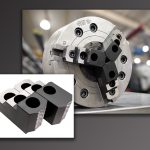Help wanted: humans need not apply
Help wanted: humans need not apply
There's no doubt that the U.S. manufacturing boom has created jobs. The question is, are they for humans or robots?
Automation, including robotics, has been lowering manufacturing labor demand for decades, but new robots are now taking not only low-skilled jobs, such as pick-and-place, but also skilled jobs, such as complex assembly. The big question is how this will affect the labor market. We already have stubbornly high unemployment, and ever-more-capable robots will not help.
Do we face a positive future where humans and robots coexist on the shop floor or a dystopia where robots make everything—including other robots—while vast numbers of people are unemployed or marginally employed? It's hard to say, but some of the trends are sobering.
For example, in his New York Times article, "Skilled work without the worker," John Markoff compared two Philips Electronics plants with similar output, one in China, where hundreds of workers use specialized tools to manually assemble electric shavers, and another in The Netherlands, where 128 camera-guided robot arms do the same work. The Dutch plant has about 10 percent of the Chinese plant's staff.
"This is the future," he wrote. "A new wave of robots, far more adept than those now commonly used by automakers and other heavy manufacturers, are replacing workers around the world in both manufacturing and distribution."
Erik Brynjolfsson and Andrew McAfee, economists at the Massachusetts Institute of Technology, said this transformation is picking up speed. In their new book, "Race Against the Machine," they write that digital technologies are "transforming the world of work and are key drivers of productivity and growth. Yet their impact on employment is not well understood. … When people talk about jobs in America today, they talk about cyclicality, outsourcing and offshoring, taxes and regulation, and the wisdom and efficacy of different kinds of stimulus. … But there has been relatively little talk about the role of acceleration of technology. It may seem paradoxical that faster progress can hurt wages and jobs for millions of people, but we argue that's what's been happening."
Their basic point is that computers are doing many things once done by people, leaving some or many people economically worse off. "The root of our problems is not that we're in a Great Recession, or a Great Stagnation, but rather that we are in the early throes of a Great Restructuring. Our technologies are racing ahead but many of our skills and organizations are lagging behind."
Anecdotal evidence seems to favor the robots. For example, Factory Automation Systems, Atlanta, related a case study where a robotic manufacturing system that cost $250,000 replaced two machine operators, each earning $50,000 a year. Over the 15-year life of the system, the machines produced $3.5 million in labor and productivity savings.
Birken Manufacturing, Bloomfield, Conn., an aerospace engine parts maker, noted automation allowed the shop to do much more business today than it did when it had a third more workers in the 1980s, according to a report by the Hartford Courant. At Birken, machinists can supervise two or three machines at once, and projected revenue could climb 15 percent in 2012 with the need to add just two workers.
And at the recent IMTS, Universal Robots, a Danish company, exhibited the UR5 and UR10 robotic arms that integrate into existing, manual production lines. UR claims the arms can perform repetitive tasks while working alongside humans, with no need for safety shielding.
We don't know yet how the robot vs. human labor scenario will play out, but, at the very least, it is a powerful wakeup call for manufacturers to invest in advanced training. Presumably, we will at least need humans to organize the robots and to oversee production. At least that's what HAL tells me.
—Alan Rooks, Editorial Director





